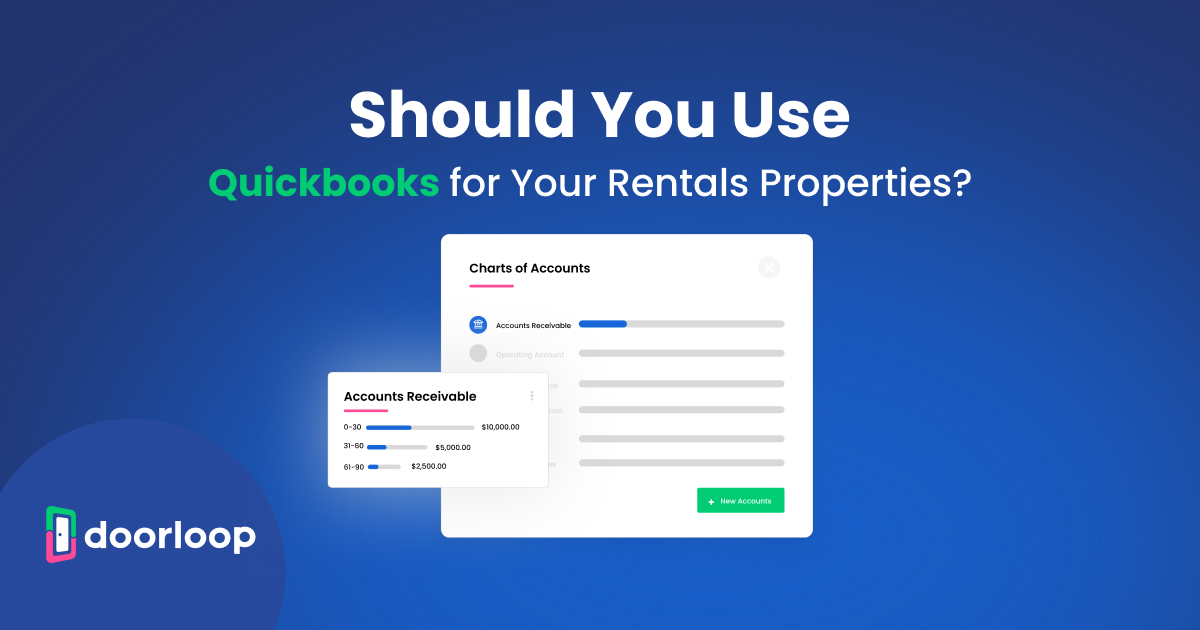When filing your taxes or deciding what changes to make to your rental property, understanding repairs and capital improvements makes a world of a difference.
To help keep you on track, we'll illuminate the critical differences between rental property repairs and improvements, their tax implications, and best practices for property owners. That way, you’ll have a clear understanding of how to classify your expenses and maximize your tax benefits.
Rental Property Repairs vs. Improvements
At first glance, repairs and improvements may seem interchangeable, but there’s a crucial distinction for tax purposes.
Repairs are necessary to maintain the property’s condition, while improvements add value or extend the useful life of the property. Knowing the difference between the two is essential for rental property owners to benefit from tax breaks, deductions, credits, and other ways to save on expenses.
To identify whether a maintenance job is a repair or a capital improvement, ask yourself these questions:
- Does the task add any value to the property beyond its original value?
- Does it simply restore the property back to its original value?
The tax implications for repairs and improvements are quite different: Repairs can be deducted in the same year they occur, while improvements must be depreciated over an extended period (up to 27.5 years for residential properties).
Defining Rental Property Repairs and Examples
In general, rental property repairs aim is to keep the property livable and up to any legal requirements, ensuring all major or structural components are in good working condition. The IRS considers repairs as any work done to achieve this.
Based on the aforementioned criteria, fixing a leaky roof is a repair, while completely replacing the roof is an improvement. Other examples include the following:
- Fixing a tap
- Repainting surfaces
- Repairing an air conditioner
- Maintaining appliances
Defining Capital Improvements and Examples
When it comes to capital improvements vs. regular maintenance, capital improvements enhance the property beyond its original condition. These include:
- Adding a new room
- Upgrading appliances
- Replacing a roof
- Putting in a new HVAC system
- Remodeling a kitchen or bathroom
- Installing new windows or doors
- Significant maintenance jobs that turn into improvements (e.g., replacing an extensive section of pipes that requires taking up the entire kitchen floor)
In this case, the expense would be classified as a capital improvement, falling under the category of capital expenditures.
Capital improvements can add value to an investment property, making it more attractive to potential buyers.
IRS List of Capital Improvements
The IRS provides guidelines for classifying capital improvements:
- Betterments, or improvements that increase the property value
- Restorations, or improvements that return the property to its original condition
- Adaptations, or improvements that change the property to a new use
Each of these terms represents a different type of capital improvement, with specific tax implications depending on the nature of the work done on the property.

Tax Implications for Rental Property Owners
Understanding the tax implications of rental property repairs and improvements is essential for maximizing your tax benefits and overall profits.
In the following subsections, we’ll delve into the specifics of deducting repair expenses and depreciating capital improvements.
Deducting Repair Expenses
Repair expenses can be deducted in the year they occur, directly reducing your taxable income. This means that as a rental property owner, you can claim 100% of repair costs in the same year they occur, lowering your overall tax liability.
By taking advantage of this deduction, you can save money on your taxes and keep more of your money.
Depreciating Capital Improvements
Capital improvements, however, must be depreciated over time. For residential properties, the depreciation period is typically 27.5 years. This means that the cost of capital improvements is spread out over their useful life, providing tax benefits over an extended period.
While this may not provide an immediate tax deduction like repairs, it still offers valuable tax advantages in the long run.

Useful Life and Cost Basis Considerations
When it comes to classifying repairs and improvements, useful life and cost basis considerations play a significant role. Useful life refers to the expected functional lifespan of an asset, while cost basis is the original cost of an asset, with capital improvements added and repairs deducted.
Cost basis is used to determine capital gains or losses when the asset is sold. For rental property owners, the cost basis includes:
- The purchase price
- Stock splits
- Dividends
- Return of capital distributions
Capital improvements increase the cost basis, while repairs decrease it.
Real-Life Examples
Let’s consider a real-life example to illustrate the difference between repairs and improvements in terms of useful life and cost basis. Suppose you own a rental property with a plumbing problem that requires you to replace a section of pipes and the entire kitchen floor. The pipe replacement is a repair, while the kitchen floor replacement is a capital improvement.
The repair expense can be deducted in the same year, while the improvement must be depreciated over its useful life, affecting the cost basis of the property.
Navigating IRS Rules and Safe Harbors
Navigating IRS rules and safe harbors is essential for rental property owners to maximize their tax benefits.
The IRS provides guidelines on classifying repairs and improvements. It also defines safe harbor provisions that allow landlords to deduct expenses without determining if they are repairs or improvements, subject to certain limits. We'll discuss this in more detail below.
Units of Property and Building Systems
The concept of unit of property (UOP) and building systems is important for determining whether the work done on a rental property, which is a type of personal property, is a deductible repair or a depreciable improvement.
The IRS requires buildings to be divided into as many as nine different UOPs, including the whole structure and up to eight separate building systems, such as mechanical, electrical, and plumbing systems.
Improving a building’s UOP, like replacing the entire roof, is considered a capital improvement.
Examples of UOPs include the following:
- The entire building structure
- Security systems
- HVAC
- Plumbing systems
These components and the building system are essential for determining if the work done on a rental property is a repair or improvement. Understanding their classification can help property owners maximize their tax benefits.
Safe Harbor Provisions
Safe harbor provisions, such as the routine maintenance safe harbor and the de minimis safe harbor, allow landlords to deduct maintenance expenses without determining if they are repairs or improvements, subject to certain limits.
For example, the routine maintenance safe harbor permits real estate investors to deduct all yearly expenses for repairs and improvements for a rental property on Schedule E.
However, the annual limit for small taxpayers is either 2% of the rental’s cost or $10,000, whichever is less. Understanding and utilizing these safe harbor provisions can help rental property owners maximize their tax benefits.
Best Practices for Rental Property Owners
To ensure success as a rental property owner, it’s essential to follow best practices, such as consulting professionals and maintaining accurate records.
Consulting Professionals
Consulting professionals, such as an accountant or tax advisor, can provide valuable guidance on:
- Classifying expenses
- Maximizing tax benefits
- Navigating IRS rules and safe harbors
- Staying up-to-date on relevant laws and regulations related to rental properties
Other professionals, such as property managers or real estate attorneys, can also provide helpful insights and assistance in managing your rental property effectively.
Accurate Record-Keeping
Maintaining accurate records and tax documents of all expenses, including receipts and invoices, is crucial for supporting tax deductions and depreciation claims.
Keeping your records organized and easily accessible, like in a spreadsheet or accounting software, can facilitate smooth tax filing and help you make informed decisions about your property.
Accurate record-keeping also protects against legal disputes and ensures compliance with laws and regulations.
Frequently Asked Questions
Does owning a rental property help with taxes?
Owning a rental property can indeed help with taxes. Property owners can benefit from various deductions for:
- Operating and owner expenses
- Depreciation of capital improvements
These tax benefits can significantly reduce the overall tax liability for rental property owners. You could also look into 1031 exchanges to avoid triggering capital gains tax liabilities.
What is the difference between a repair and a capital improvement to a property?
The main difference between a repair and a capital improvement is that repairs maintain the property’s condition, while improvements add value or extend the useful life of the property. Repairs typically include tasks like fixing broken windows or replacing a broken appliance, while improvements might involve remodeling a kitchen, adding a deck, or replacing a roof.
It is important to note that repairs are generally considered to be deductible expenses, while improvements are not.
Is replacing an air conditioner a repair or improvement?
Replacing an air conditioner may be considered a repair if it restores the property to its original condition, or an improvement if it enhances the property beyond its original state.
For example, if you’re simply replacing a broken air conditioner with a similar model, it would be a repair.
However, if you’re upgrading to a more energy-efficient model or adding central air conditioning to a property that didn’t previously have it, this would be considered an improvement.
Is painting a repair or improvement?
Painting can be considered a repair if it maintains the property’s condition, such as touching up scuffed walls or covering cracked floor tiles.
However, painting can also be an improvement if it significantly upgrades the property’s appearance, like giving the entire exterior a fresh, modern look. In this case, it would be considered a capital improvement and treated differently for tax purposes.
Are repairs or improvements better for taxes?
Overall, improvements are likely the better option for taxes as they provide a long-term benefit to the property’s value. On the other hand, repairs are typically more cost effective in the short term and can be deducted in the same tax year. That said, this can vary depending on the specific circumstances.
































.svg)
.svg)

